LOWELL MARVIN (BUD) NEFF
Lowell was born August 21, 1921, at Osceola, Iowa. He had five sisters: Mildred (George), Dorotha (Poland), Aleta (McDaniel) Edith Anne (Neisemier) and Oma (Crabb).
Less than a month after the attack on Pearl Harbor, on December 7, 1941, Lowell enlisted in the Navy — January 3, 1942. He stood 5'11" and weighed 180 pounds. He was sent to Great Lakes, Illinois for basic training, and his daughter, Ronda Neff Surber, remembers him saying that with him in basic training were the Sullivan brothers. There was a great deal of publicity about them, and a change in regulations, when five from the family were killed.
One aspect of the training was learning to swim, which he never was able to do. He had remarked that he would be in real trouble if the boat ever went down. It was a prophetic comment because, on April 6, 1945, the ship to which he was assigned, the USS Morris, was hit by a kamikaze suicide mission attack. He was injured and lying on the deck. One of his shipmates saw him floundering, knew he couldn't swim so gave him his life vest. His sisters recall in that incident all his hair was burned off. |
|
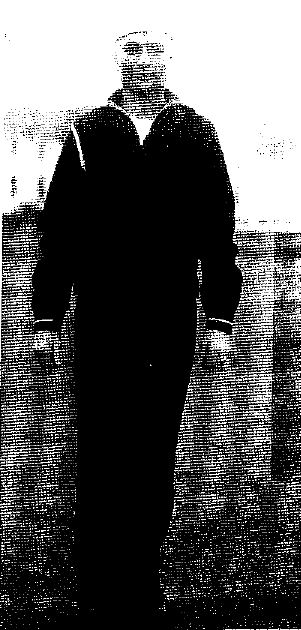
|
|
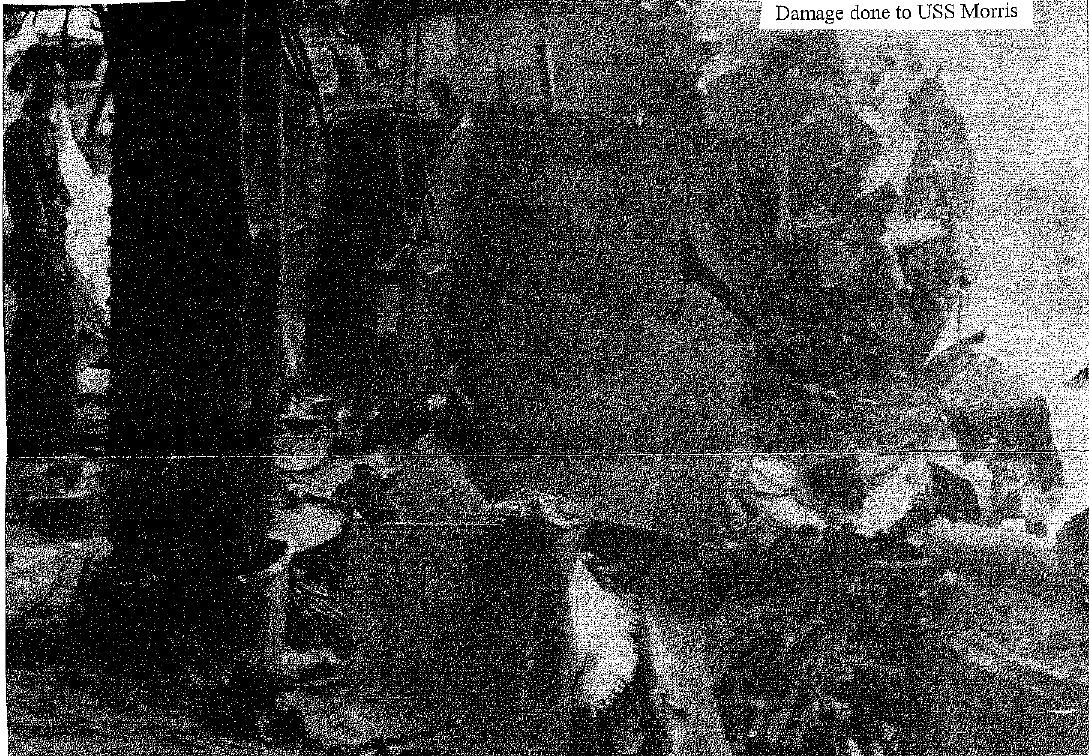
In "News of the Yanks" published by the Osceola Sentinel sometime between 1946 and 1950 is the following: "Lowell M, Neff B.N. 2/c USN has returned to San Diego Navy Hospital for treatment after a 30-day leave with friends and relatives. Lowell was injured at Okinawa on April 6, and has been having hospital care since." The B.N. initials is for Boatswain's (pronounced bosun) Mate, which rank is for those sailors in charge of rigging, anchors, cables, etc. He was on the USS Morris.
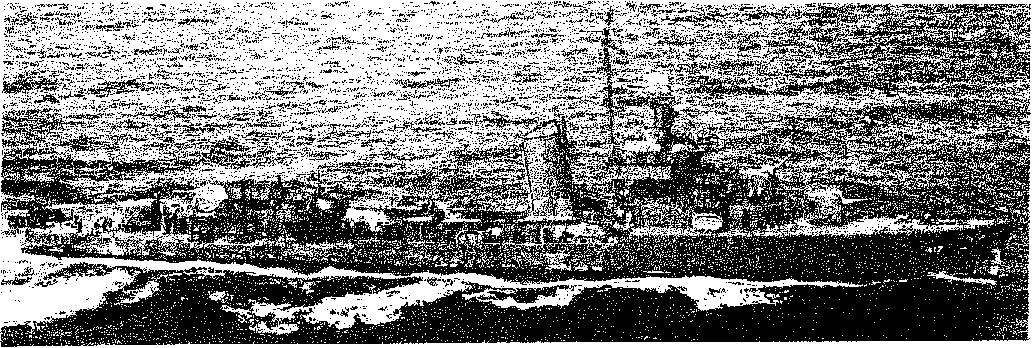
Those who served on a ship have an special relationship to her and to one another. The destroyer USS Morris was commissioned in 1940, and in her earlier days was in active duty in the "bitter pre-war North Atlantic Patrol." The USS Jacob Jones was sunk and the USS Kearny torpedoed while carrying out similar tasks, as German submarines and raiding battleships constituted an ever-present threat. Destroyers were lighter vessels — (The typically-sized ship's company was 267). They were more subject than heavier battleships to rough waters and at one time, in the North Atlantic, the Morris rolled 73°.
Immediately upon commencement of hostilities with Japan, the Morris along with other ships, were equipped with the first fire control radar ever installed on a destroyer. The Morris proceeded to the West Coast for duty in the Pacific, arriving at Pearl Harbor in the middle of February, 1942. She shot down one plane and damaged two others on her way to assist the "blazing and exploding Lexington, to rescue some 500 survivors under extremely hazardous conditions." She sustained damage in the endeavor and returned to Pearl Harbor for repairs.
It was at this time that the fate of Midway Island was threatened. Several ships were damaged and USS Morris assisted, again, in rescue work, picking up nearly 500 survivors and destroying one enemy plane. Morris sailed to the South Pacific to help cover the landing on Guadalcanal. Other ships in the squadron were torpedoed and the USS O'Brien later broke in two. Morris participated in the Buin-Faisi-Tonolai Raid, swept through the Gilbert Islands, and the Battle of Santa Cruz. In that engagement, Morris destroyed six enemy aircraft, bringing the total to eight Japanese planes they had destroyed. This brought her to the attention of Japanese planes, who viciously attacked by dive bombing, in spite of which she rescued 550 survivors of the sinking Hornet.
The wholesale rescue of over 500 men on several occasions created a problem. Her galley operated 24 hours a day, feeding men every minute of the hour. Rescued personnel were obliged to remain off topside so the added weight would not endanger the safety of the ship. "Offices and men of the ship's company unstintingly gave away their clothes to the wet and scantily clad survivors."
In addition to those already mentioned, the USS Morris escorted supply units to the Russell Islands, took part in the capture and occupation of the Attu Island and Kiska, after which she was sent to Navy Yard, Mare Island for her first overhaul since commissioning. At that point she had steamed over 300,000 miles. After seven weeks, she took part in the Central Pacific campaign which was this country's first step westward. She escorted Lissome Bay, which exploded and sank with heavy casualties, Coral Sea and Corrigidor in the Gilbert Islands. The Morris' rescue of 200 men brought her total of rescued survivors to 1,750, not including many separate rescues.
Now came preparation for the next great campaign in the Central Pacific. To readers who have followed the invasions and battles in the campaign to take back from the Japanese the islands in the Pacific, are acquainted with the names of places where the USS Morris was involved. They were some of the most vicious and costly confrontations took: the Marshall Islands, Wotje, the Kwajalein Atoll, Eniwetok, and in the southwest Pacific Hollandia, New Guinea, Palau, Ulithi, and others.
Tremendous territory was captured and numerous enemy forces were rendered harmless, but finally "a plane, although it had been set on fire, crashed into Morris, exploding the torpedo or large bomb it was carrying. For the next two hours intense fires raged throughout the forward of the ship, fed by gasoline from the crashed plane and powder exploding in Morris' magazine and handling rooms." With assistance of other ships, her fires were finally subdued but two officers and 22 men were killed; two officers and 42 men wounded.. There were "numerous acts of heroism but it was the over-all spirit and work of every officer and man aboard that the Morris was saved." She proceeded for port, necessarily slowly but after 51 days, during which she was being repaired. She was made ready for further action against the enemy. |
|
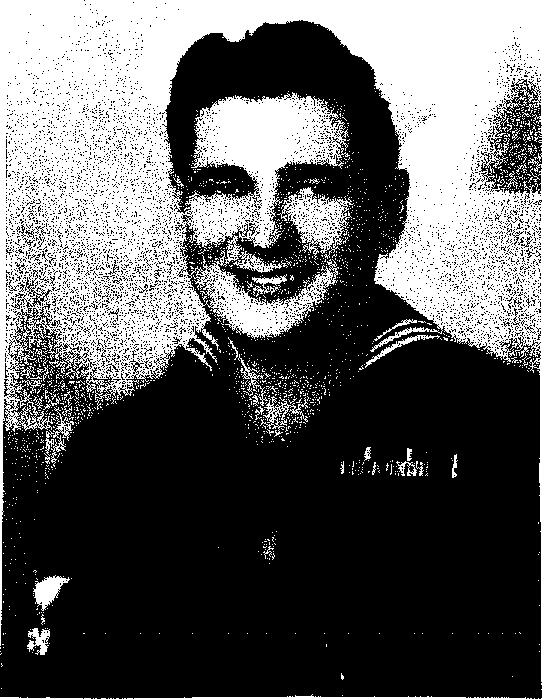
|
|
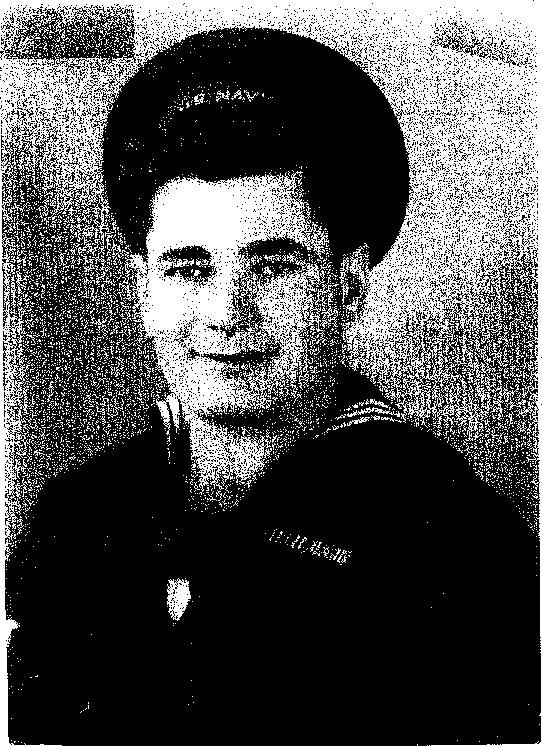
|
|
Lowell was discharged June 25, 1946. His rank was Boatswain's Mate 2nd Class. He was awarded the Purple Heart, Good Conduct Medal, Asiatic-Pacific (with 12 stars), American Theatre, Philippine Liberation (with two stars) and Victory Medal.
Lowell was married while he was in service, and Ronda was born and grew up knowing her father as a civilian farmer. But she remembers sitting with him when they watched war movies on television and wrote, "I do not ever recall a moment that his eyes were dry at the end of one. The picture of his ship was always on display and the time in the service with his shipmates were always the warmest of memories.
"He had a tattoo in color, the full length of the calf of his leg, of a girl dressed in shorts and shirt tied in a knot under her breasts, leaning against a wooden fence. After he was injured, the wooden fence had a four inch vertical scar that removed part of the fence, but did not
damage the lady. He was always willing to show his tattoo. He also carried a piece of shrapnel so close to his heart that it could not be removed." |
|
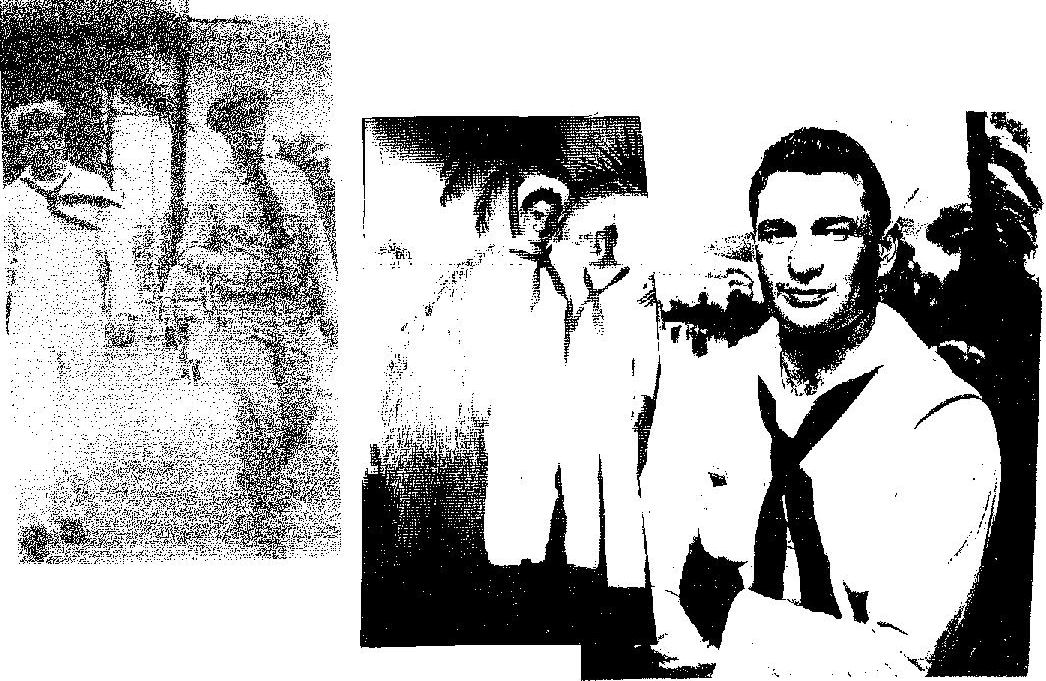
Return to main page for Clarke Veterans by Fern Underwood
Last Revised June 8, 2015





